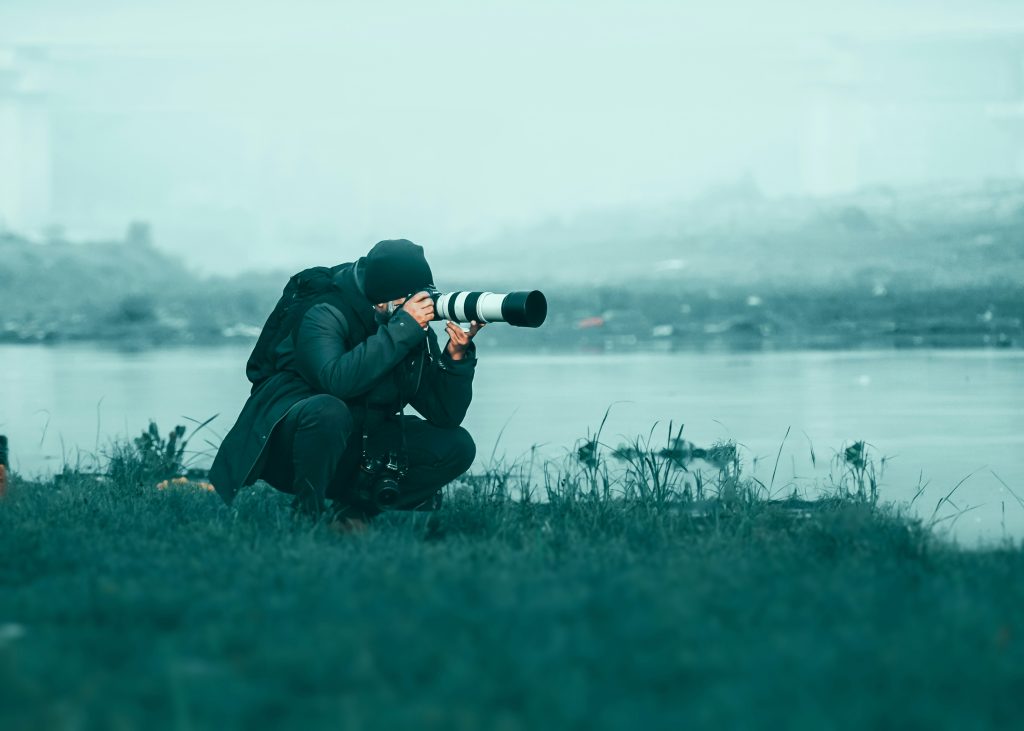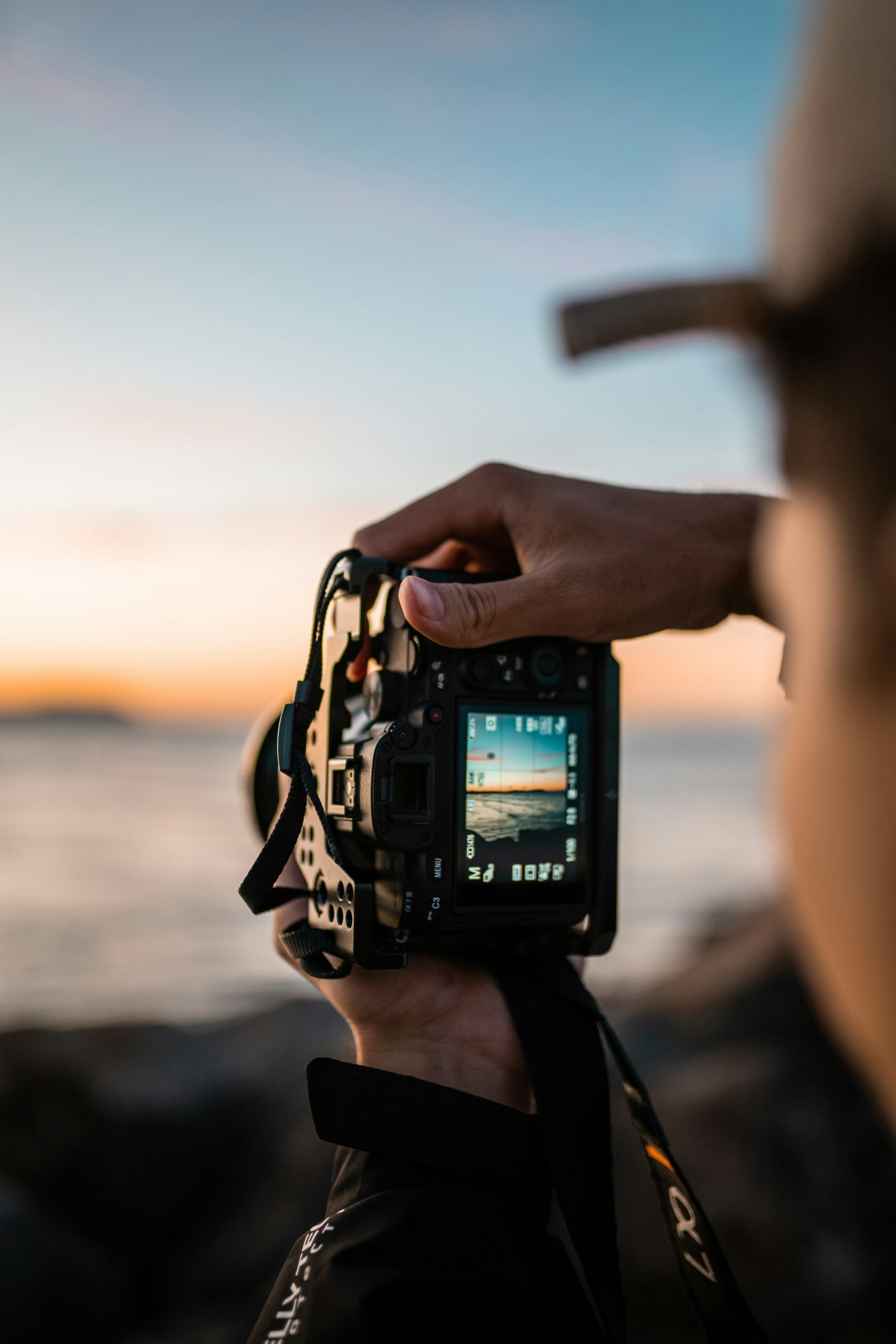Have you ever wondered about the drawbacks of using a telephoto lens? In photography, these lenses are known for their ability to capture distant subjects with great detail, but they come with their own set of limitations. Two notable disadvantages of using a telephoto lens are their size and weight, which can make them cumbersome to carry and handle, especially during long shooting sessions. Additionally, telephoto lenses have a shallower depth of field, which means that achieving sharp focus on both the subject and background can be a challenge. Despite these drawbacks, however, telephoto lenses remain a valuable tool for capturing stunning images from a distance.

Limited Field of View
Narrow Perspective
One of the main disadvantages of using a telephoto lens is the limited field of view. With a narrow focal length, telephoto lenses offer a more restricted view compared to wide-angle lenses. This means that you won’t be able to capture as much of the scene in a single frame. It can be challenging to convey the full context or story of a subject when you are confined to such a narrow perspective.
Difficulty Capturing Wide Scenes
Telephoto lenses are known for their magnification capabilities, allowing you to capture distant subjects with stunning detail. However, this strength becomes a limitation when it comes to capturing wide scenes. Due to the narrower field of view, it becomes difficult to fit expansive landscapes or larger groups of people into the frame. You may find yourself having to stitch multiple photos together or compromise on the composition to include everything you want within the frame.
Inability to Capture Close-up Details
While telephoto lenses excel in capturing distant subjects, they struggle with capturing close-up details. Getting up close and personal with your subject requires a minimum focusing distance, which can be challenging to achieve with a telephoto lens. This limitation makes it harder to capture small details, intricate textures, or macro-like shots that highlight the intricacies of your subject.
Loss of Context in Photos
Another drawback of telephoto lenses is the potential loss of context in photographs. When you zoom in on a subject, the background and surrounding elements may become compressed or blurred, losing their significance in the final image. This can result in isolated subjects that lack context or fail to convey the full story. It’s important to consider the overall narrative and capture images that provide enough context to engage viewers.
Increased Image Distortion
Compression of Depth
Telephoto lenses tend to compress depth in an image, making the distances between objects appear smaller than they actually are. This can be a disadvantage when trying to create a sense of depth or three-dimensionality in your photographs. The compression effect can flatten the scene, making it less dynamic and visually engaging.
Visible Image Blur
Using telephoto lenses can also increase the chances of visible image blur. With the magnification power of telephoto lenses, even the slightest movement of the camera can result in noticeable blur in your photos. This can be especially problematic when shooting handheld or in low-light conditions, where longer exposure times are required. It’s important to use techniques such as image stabilization or a tripod to minimize blur and ensure sharp, clear images.
Reduced Image Quality
Telephoto lenses may also lead to a reduction in image quality compared to lenses with shorter focal lengths. As the focal length increases, so does the complexity of the lens design, resulting in potential image distortions and optical aberrations. Additionally, the smaller apertures often found in telephoto lenses can introduce diffraction, further impacting the overall sharpness and image quality.
Challenges in Capturing Moving Subjects
When it comes to capturing moving subjects, telephoto lenses can present some challenges. The narrow field of view, combined with the magnification effect, makes tracking fast-moving subjects more difficult. It requires precise panning and a steady hand to keep the subject in focus and properly framed. Additionally, the limited depth of field at longer focal lengths can make it challenging to maintain focus on moving subjects, resulting in missed focus opportunities.

Large and Heavy Equipment
Bulkiness and Weight
Telephoto lenses tend to be larger and heavier compared to other lenses. Carrying such equipment can be cumbersome, especially when you have to shoot for extended periods or on the go. The size and weight of telephoto lenses can make your camera setup feel imbalanced, potentially causing discomfort or even strain on your body after prolonged use.
Inconvenience during Travel
The large and heavy nature of telephoto lenses can also pose challenges during travel. They take up significant space in your camera bag and can be troublesome to fit into your luggage. Moreover, carrying such equipment around while exploring new destinations can be tiring and limit your mobility. It’s important to consider the practicality and convenience of using telephoto lenses, especially when traveling light is essential.
Need for Tripod or Stabilization
The weight and size of telephoto lenses often necessitate the use of extra stabilization equipment. Handholding these lenses for extended periods can lead to fatigue and increase the risk of camera shake. To ensure sharp, shake-free images, it’s crucial to invest in a sturdy tripod or other image stabilization accessories that can handle the weight of a telephoto lens. These additional accessories add further bulk and inconvenience to your photography setup.
Potential Strain on Photographer
Using telephoto lenses for an extended period can put a strain on the photographer. The weight and size of the equipment, combined with the need for stable handholding or prolonged use of a tripod, can lead to fatigue and discomfort. It is important to take breaks and manage your physical well-being when using telephoto lenses to ensure optimal performance and enjoyment of your photography experience.
Reduced Amount of Light
Smaller Aperture
Telephoto lenses often come with smaller maximum apertures compared to other lenses. A smaller aperture limits the amount of light that can enter the camera, resulting in reduced exposure. This can be a disadvantage, particularly in low-light situations where you need a wider aperture to maintain proper exposure without sacrificing image quality.
Longer Exposure Times
In order to compensate for the smaller aperture, telephoto lenses may require longer exposure times. This can be challenging when photographing moving subjects or in situations where you need to freeze the action. Longer exposure times increase the chances of blurred images due to camera shake or subject movement. It can also pose difficulties in low-light conditions, as longer exposures introduce the risk of noise and loss of detail.
Difficulty in Low-Light Situations
Telephoto lenses’ smaller apertures and potential need for longer exposure times make them less ideal for low-light photography. When shooting in dimly lit environments, you may struggle to gather enough light to achieve a properly exposed image with good image quality. This limitation can be especially pronounced in situations where you cannot use artificial lighting or when photographing subjects that are sensitive to flash.
Increased Noise in Photos
The combination of smaller apertures and longer exposure times can also lead to increased noise in your photos. As the camera’s ISO is boosted to compensate for the reduced light, noise artifacts become more prevalent. Noise can reduce overall image quality, particularly in areas with low contrast or smooth gradients. It is important to be aware of this limitation and utilize noise reduction techniques or post-processing software to mitigate this issue.

Increased Camera Shake
Magnification of Small Movements
Using a telephoto lens magnifies even the smallest movements, resulting in an increased risk of camera shake. Any slight hand tremors or unintentional movements can be greatly exaggerated, leading to blurry images. This can be particularly problematic when shooting handheld or in less-than-ideal lighting conditions that require longer exposure times.
Higher Chance of Blurry Photos
Due to the magnification effect, telephoto lenses inherently have a higher chance of producing blurry photos. From minor camera movements to subject movement, the margin for error becomes smaller when using a telephoto lens. The narrow depth of field further exacerbates this issue, as even a slight misfocus can result in a loss of sharpness.
Need for Steady Hands or Image Stabilization
To mitigate the risk of camera shake and ensure sharp images, steady hands are essential when using a telephoto lens. The increased focal length and potential frame magnification demand precision and stability during shooting. If handholding is not feasible for certain shooting scenarios, image stabilization systems in lenses or cameras can help compensate for camera shake and increase the chances of capturing sharp images.
Requirement for Faster Shutter Speeds
Overcoming camera shake with telephoto lenses often requires faster shutter speeds. However, achieving these faster speeds can be challenging, especially in low-light conditions or when capturing fast-moving subjects. The limited amount of light and the potential need for smaller apertures further compound this challenge. One must carefully balance shutter speed, aperture, and ISO to minimize camera shake while maintaining proper exposure.
Costly Investment
Higher Price Tag
One significant disadvantage of using telephoto lenses is the higher price tag compared to other lenses. Due to the complexity and magnification capabilities, telephoto lenses often command a premium price. The investment required to acquire a high-quality telephoto lens can be substantial, making it a less accessible option for some photographers, particularly those on a limited budget.
Additional Accessories
Telephoto lenses may require additional accessories to achieve optimal performance or address specific shooting needs. These accessories, such as lens hoods, filters, or teleconverters, can add to the overall investment required. While some accessories are essential, others may be optional or dependent on the photographer’s specific requirements. It’s important to consider the additional costs associated with telephoto lens photography.
Potential Need for Upgraded Camera Body
Using a telephoto lens often demands a camera body that can handle the specific requirements and advanced features of such lenses. A high-resolution sensor, accurate autofocus system, and robust image stabilization are some of the features that can enhance the performance when pairing with telephoto lenses. Upgrading to a camera body that complements the telephoto lens may involve an additional investment.
Limited Versatility for Everyday Photography
Telephoto lenses are designed specifically for capturing subjects at a distance, meaning they may have limited versatility for everyday photography. Their longer focal lengths and narrower fields of view can make it challenging to capture wide scenes or spontaneous moments in crowded environments. While they excel at specific types of photography, such as wildlife or sports, telephoto lenses may not be as practical or versatile for capturing everyday moments.
Challenging Manual Focus
Narrow Depth of Field
Telephoto lenses often have a narrow depth of field, even when using smaller apertures. This makes achieving accurate focus manually more challenging, as the margin for error becomes smaller. The more precise and careful adjustments needed to achieve sharp focus can be time-consuming and may require additional practice and experience.
Sensitive Focus Adjustments
Due to the narrow depth of field, telephoto lenses can be more sensitive to focus adjustments. Even the slightest movement of the focus ring can result in a significant shift in focus. This sensitivity makes it critical to have a steady hand or use focus-assist tools, such as magnification in the camera’s viewfinder, to achieve accurate focus when manually focusing with a telephoto lens.
Difficulty in Tracking Moving Subjects
When manually focusing on moving subjects with a telephoto lens, it can be challenging to maintain accurate focus continuously. The narrow depth of field, combined with the relative speed of the subject, requires precise adjustments to keep the subject in focus. Tracking moving subjects with a telephoto lens can be particularly difficult when shooting handheld, as any camera movement can impact focus accuracy.
Potential Missed Focus Opportunities
The challenges associated with manual focusing using a telephoto lens present the risk of missed focus opportunities. Achieving sharp focus requires a high level of precision and skill, which may not always be achievable in fast-paced or unpredictable shooting scenarios. This limitation can result in missed moments or images that lack the desired level of sharpness and clarity.
Intrusion on Candid Moments
Making Subjects Self-Conscious
The use of a telephoto lens can make subjects more self-conscious about being photographed. The sheer size and magnification of the lens can draw attention to the photographer, potentially altering the natural behavior and candidness of subjects. People may become more reserved or performative, resulting in images that lack the authenticity often associated with candid moments.
Distancing with Subjects
The physical distance created when using a telephoto lens can create a sense of detachment between the photographer and the subject. This can lead to a loss of connection and intimacy, as the photographer is physically removed from the scene. Subjects may be less inclined to engage, resulting in images that feel distant and lack emotional impact.
Influence on Natural Behavior
The presence of a telephoto lens can influence the behavior of subjects, causing them to modify their actions or pose differently. This alteration can lead to photographs that feel staged or inauthentic, rather than capturing genuine moments. It becomes challenging to capture true emotions or candid interactions when the use of a telephoto lens is obvious.
Limitations in Street or Documentary Photography
Telephoto lenses may not be the ideal choice for street or documentary photography, where capturing authentic moments is of paramount importance. The physical and emotional distance created by the lens can hinder the ability to immerse yourself in the scene and capture the true essence of a moment. The intrusiveness of the telephoto lens can also attract unwanted attention, potentially compromising the candidness of the subjects or raising privacy concerns.
Limited Portability
Size and Weight Constraints
Telephoto lenses, due to their construction and inherent focal length, tend to be larger and heavier compared to other lenses. This poses a constraint on the portability of the equipment, making it challenging to carry and use the lens in certain situations or environments. It can be particularly cumbersome when hiking or traveling long distances on foot.
Inconvenience for On-the-go Photography
The size and weight of telephoto lenses can be inconvenient for on-the-go photography. When you need to be agile and move quickly to capture fast-changing scenes or spontaneous moments, the bulkiness of a telephoto lens can hinder your ability to react swiftly. The need to constantly assemble and disassemble the lens can also slow down your shooting process, potentially causing you to miss important shots.
Need for Specialized Carrying Equipment
The portability challenges of telephoto lenses often require specialized carrying equipment to ensure their safe transport. Camera bags or backpacks with compartments designed to accommodate and protect the lens become necessary, adding to the overall bulk and weight of your photography setup. Investing in the right carrying equipment is crucial to prevent damage to your gear and provide ease of transportation.
Potential Obstacle in Outdoor Activities
Telephoto lenses can present obstacles when participating in outdoor activities or engaging in certain hobbies. Their weight and size may make it difficult to carry the necessary gear while also enjoying activities such as hiking, biking, or skiing. The portability limitations of telephoto lenses may deter photographers from taking their equipment along on certain adventures, limiting their creative opportunities.
Learning Curve
Understanding the Lens Characteristics
Using a telephoto lens effectively requires gaining a deep understanding of its characteristics and limitations. It’s important to learn about factors such as minimum focusing distance, maximum aperture, and image stabilization capabilities. Each telephoto lens has unique qualities, and understanding these characteristics will significantly impact your ability to capture stunning images and make the most of its capabilities.
Mastering Telephoto Techniques
Telephoto lenses demand mastery of specific techniques to achieve optimal results. Techniques such as proper stabilization, accurate focusing, and correct exposure settings become even more crucial when working with a telephoto lens. It may take time and practice to navigate the intricacies of telephoto photography and develop the necessary skills to consistently capture compelling images.
Different Composition and Framing Approaches
The longer focal lengths of telephoto lenses require a different approach to composition and framing. With a narrower field of view, you need to consider how best to include or exclude elements within the frame. The compressed perspective and increased subject isolation can influence your creative decisions and storytelling capabilities. Exploring various composition techniques and experimenting with framing will help you maximize the potential of your telephoto lens.
Practice for Optimal Results
Using a telephoto lens effectively requires practice and experimentation. Learning how to handle the weight, adjust focus accurately, and anticipate the magnification effect takes time and patience. It’s important to dedicate time to practice in various shooting scenarios, refining your technique and familiarizing yourself with the lens’s behavior. Regular practice will help you overcome the challenges and limitations of telephoto lenses, enabling you to consistently achieve optimal results in your photography.



